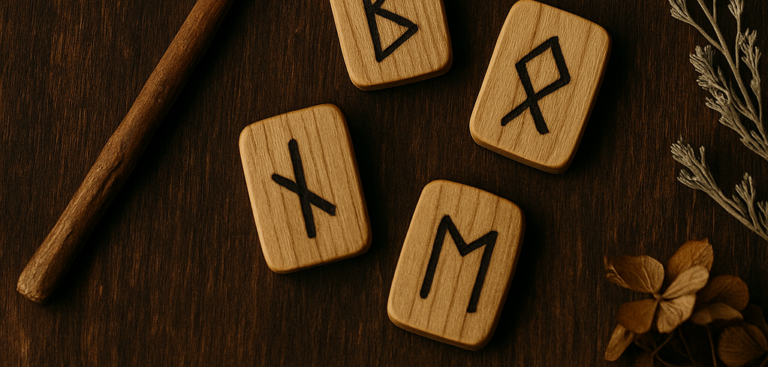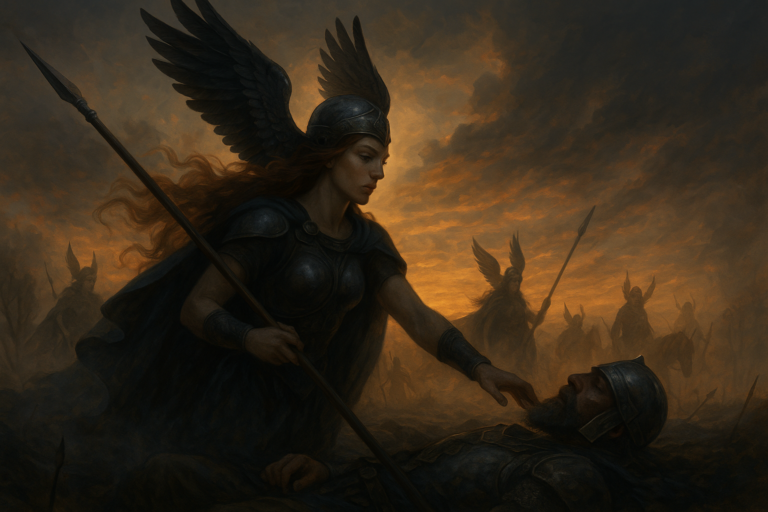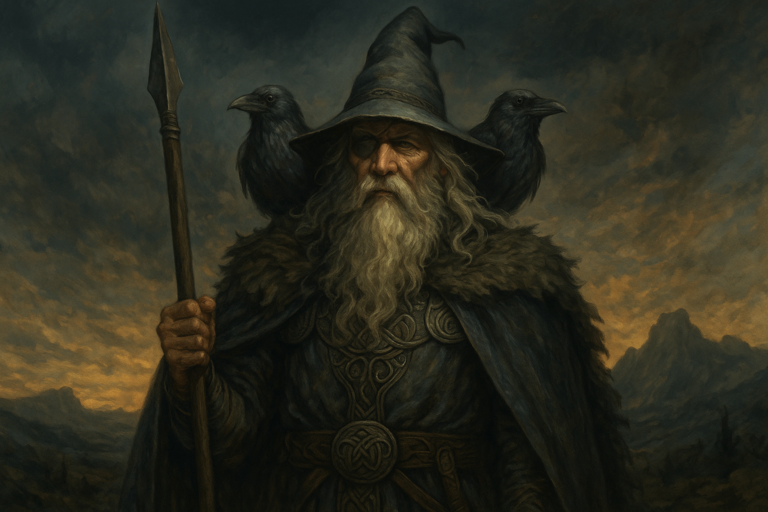In Norse mythology, the universe is not a single unified realm but divided into nine distinct worlds. These worlds are interconnected through the mighty World Tree Yggdrasil and represent the balance of cosmic forces: light and darkness, order and chaos, life and death.
This article introduces you to the nine worlds as described in the Eddas – ideal for anyone interested in diving deeper into Norse cosmology and spiritual structure.
Asgard – The Realm of the Gods
Asgard is home to the Aesir, the principal gods of the Norse pantheon. Here rules Odin, the Allfather, alongside other major deities like Frigg, Thor, Baldur, and Tyr. Asgard is a radiant and majestic world, situated high among the branches of Yggdrasil. It is connected to Midgard, the world of humans, by the rainbow bridge Bifröst. Within Asgard lies Valhalla, Odin’s great hall, where slain warriors (Einherjar) prepare for Ragnarök. Asgard symbolizes divine order, wisdom, warfare, and the pursuit of higher consciousness.
Midgard– The World of Humans
Midgard is the realm inhabited by humans. It lies at the center of Yggdrasil and is surrounded by a vast ocean in which the world serpent Jörmungandr resides. The gods built a protective barrier around Midgard using the eyebrows of the primordial being Ymir. Midgard is connected to Asgard via Bifröst and represents earthly life, the struggle for survival, and humanity’s connection to the divine.
Vanaheim – The Realm of the Vanir
Vanaheim is the home of the Vanir, a second family of gods associated with fertility, nature, wealth, and magic. Notable Vanir deities include Njörd, and his children Freyja and Freyr. After a legendary war with the Aesir, the two groups reconciled and exchanged members, signifying a balance between power (Aesir) and harmony with nature (Vanir). Vanaheim is a fertile, abundant realm of spiritual unity and natural cycles.
Jötunheim – The Land of the Giants
Jötunheim (or Jotunheimr) is the ancient, wild domain of the Jötnar – the giants. Often seen as opponents of the gods, they also embody elemental forces, deep wisdom, and sometimes beauty. Giants dwell in rugged, inhospitable terrains: mountains, icy wastes, and dark forests. Prominent figures include Skadi, goddess of the hunt, and Thjazi, a mighty giant. Jötunheim symbolizes the untamed and the primal – a necessary counterpart in the cosmic interplay.
Alfheim – The Realm of the Light Elves
Alfheim is inhabited by the Light Elves (*Ljósálfar*), radiant, ethereal beings associated with light, nature, and magic. They are graceful, beautiful, and inspire healing and creativity. Alfheim is described as a luminous, harmonious realm and is ruled by the god Freyr, reinforcing its connection to beauty, fertility, and peace.
Svartalfheim / Nidavellir – The Realm of the Dwarves
Beneath the earth in deep caves and tunnels lies Svartalfheim, also known as Nidavellir. This is the home of the Dwarves (Dvergar), master smiths and artisans who forged legendary items such as Mjölnir (Thor’s hammer), Gungnir (Odin’s spear), and Draupnir (a magical gold ring). Though reclusive, the dwarves are vital to the balance between material reality and magic. Their realm stands for transformation, creativity, and hidden wisdom.
Muspelheim – The Realm of Fire
Muspelheim is a world of fire, blazing heat, and raw, destructive energy. It is home to the fire giant Surtr, who will wield a flaming sword during Ragnarök, bringing about the end of the world. Muspelheim is not only a realm of destruction but also creation; in the Norse creation myth, the clash of fire from Muspelheim and ice from Niflheim gave birth to the first being. It symbolizes dynamic energy, transformation, and renewal.
Niflheim– The Realm of Ice and Mist
Niflheim is the frosty counterpart to Muspelheim. It is a world of ice, darkness, and primordial fog. From here flows the river Hvergelmir, source of many other rivers. Niflheim is the origin of the icy elements of the cosmos, a place of silence and stillness. It embodies potential, timelessness, and the unformed roots of creation.
Helheim – The Realm of the Dead
Helheim lies deep beneath the other realms and is ruled by the death goddess Hel, daughter of Loki. This realm is where the souls of those who die natural deaths go, as opposed to warriors who go to Valhalla or Folkvangr. Helheim is not a place of punishment but one of rest, reflection, and transition. It is the realm of ancestors, shadows, and spiritual preparation.
Conclusion: A Spiritual Order
The nine worlds of Norse mythology are more than just “places” – they represent states of being, cosmic principles, and archetypal energies. Exploring them means stepping into a spiritual cosmos deeply connected to nature, transformation, and sacred balance.


